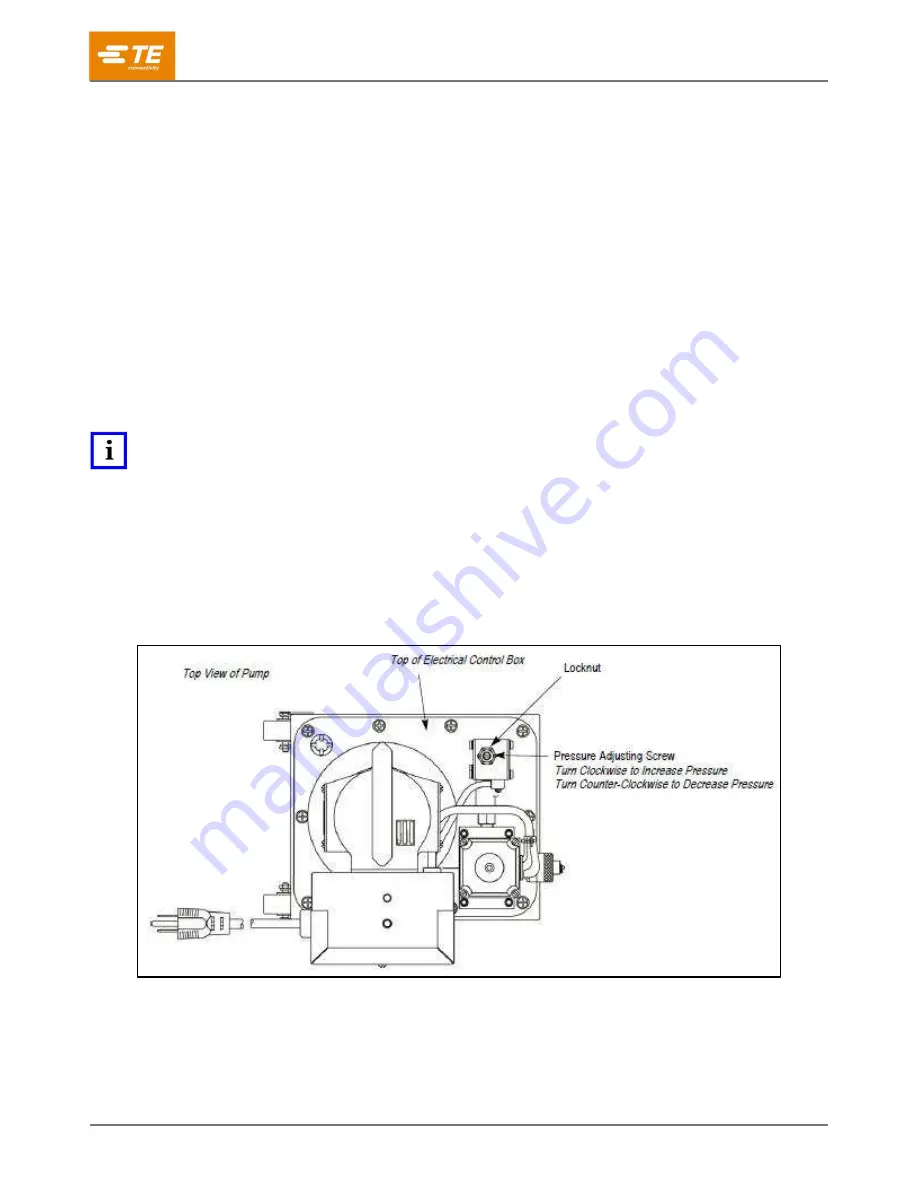
409-1950
Rev G
20
of 22
6.4.
Checking Hydraulic Pressure
Check that the pump is functioning properly and reaching the proper pressure after every eight hours of use. If
necessary, adjust the pressure as follows:
1. Depress the DUMP switch to release the pressure from the system, then DISCONNECT the pump
from the power supply.
2. Remove the accessory from the hydraulic hose. Install a hydraulic pressure gage onto the end of the
hose.
3. Re-connect the pump to the power supply, and partially cycle the pump two or three times to bleed air
from the system.
4. Jog the pump through a cycle, then read the pressure level on the gage. If the gage reading is between
552 and 579 bar 18000 and 8400 psi], and the pump cycles properly, no adjustment of the pressure
switch is necessary.
If the reading is out of the required range, loosen the locknut on the pressure switch and turn the adjusting
screw clockwise to increase the pressure, or counter-clockwise to decrease the pressure. Turning the screw
half a rotation adjusts the pressure by one increment. Refer to Figure 9.
NOTE
The pressure switch should only be adjusted if the pump is not producing the desired pressure during crimping.
5. Holding the adjustment screw in place, tighten the locknut.
6. Actuate the pump to check the pressure setting. It might be necessary to make a second adjustment.
7. Depress the DUMP switch to release the pressure from the system, then DISCONNECT the pump
from the power supply. Remove the hydraulic pressure gage and reconnect the hose.
Figure 9: Adjusting hydraulic pressure

















